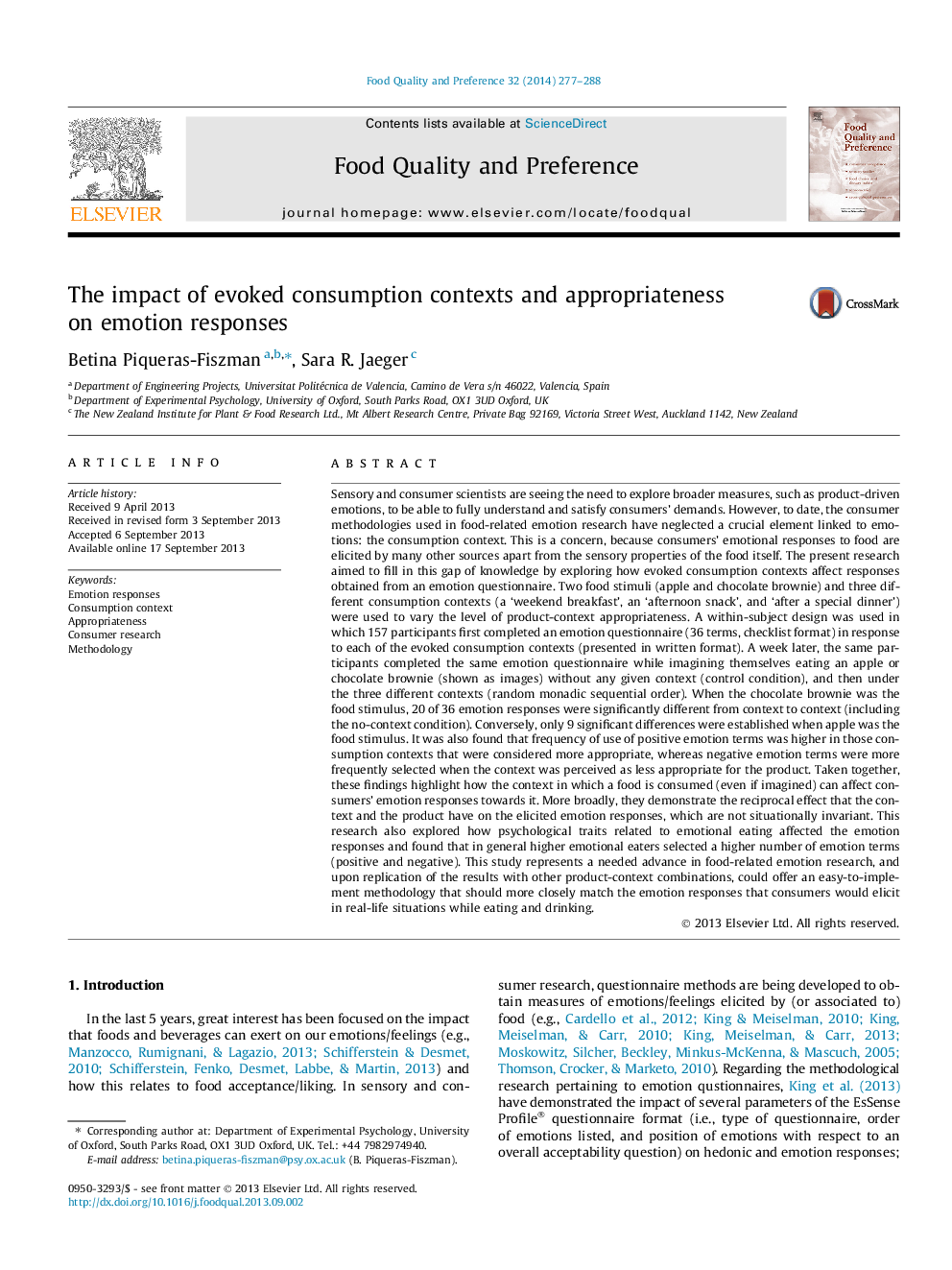| کد مقاله | کد نشریه | سال انتشار | مقاله انگلیسی | نسخه تمام متن |
|---|---|---|---|---|
| 4317274 | 1290586 | 2014 | 12 صفحه PDF | دانلود رایگان |
• A consumption situation-based approach to measuring emotion-related responses is developed.
• The different consumption contexts (imagined) exerted a significant impact on consumers’ emotion responses.
• The differences between the food’s emotion profiles also varied significantly as a function of the contexts.
• Food-context appropriateness ratings helped to underpin our understanding of several emotion responses.
Sensory and consumer scientists are seeing the need to explore broader measures, such as product-driven emotions, to be able to fully understand and satisfy consumers’ demands. However, to date, the consumer methodologies used in food-related emotion research have neglected a crucial element linked to emotions: the consumption context. This is a concern, because consumers’ emotional responses to food are elicited by many other sources apart from the sensory properties of the food itself. The present research aimed to fill in this gap of knowledge by exploring how evoked consumption contexts affect responses obtained from an emotion questionnaire. Two food stimuli (apple and chocolate brownie) and three different consumption contexts (a ‘weekend breakfast’, an ‘afternoon snack’, and ‘after a special dinner’) were used to vary the level of product-context appropriateness. A within-subject design was used in which 157 participants first completed an emotion questionnaire (36 terms, checklist format) in response to each of the evoked consumption contexts (presented in written format). A week later, the same participants completed the same emotion questionnaire while imagining themselves eating an apple or chocolate brownie (shown as images) without any given context (control condition), and then under the three different contexts (random monadic sequential order). When the chocolate brownie was the food stimulus, 20 of 36 emotion responses were significantly different from context to context (including the no-context condition). Conversely, only 9 significant differences were established when apple was the food stimulus. It was also found that frequency of use of positive emotion terms was higher in those consumption contexts that were considered more appropriate, whereas negative emotion terms were more frequently selected when the context was perceived as less appropriate for the product. Taken together, these findings highlight how the context in which a food is consumed (even if imagined) can affect consumers’ emotion responses towards it. More broadly, they demonstrate the reciprocal effect that the context and the product have on the elicited emotion responses, which are not situationally invariant. This research also explored how psychological traits related to emotional eating affected the emotion responses and found that in general higher emotional eaters selected a higher number of emotion terms (positive and negative). This study represents a needed advance in food-related emotion research, and upon replication of the results with other product-context combinations, could offer an easy-to-implement methodology that should more closely match the emotion responses that consumers would elicit in real-life situations while eating and drinking.
Journal: Food Quality and Preference - Volume 32, Part C, March 2014, Pages 277–288
